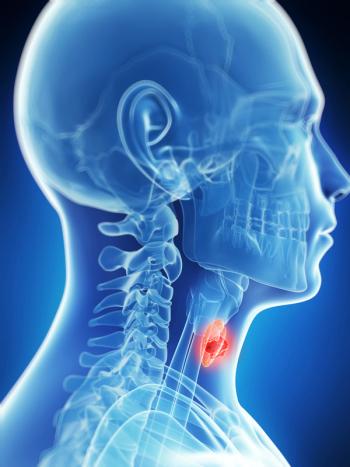
Tobacco Use Tied to Oral Cancer–Causing HPV
Using tobacco is linked to an increased risk of infection with oral HPV type 16, a sexually transmitted virus known to cause cancers of the mouth and throat.
Using any form of tobacco is linked to an increased risk of infection with oral human papillomavirus (HPV) type 16, a sexually transmitted virus that is known to cause cancers of the mouth and throat. The study shows HPV-16 infection is more common among those who have recently used tobacco or been exposed to tobacco, independent of sexual behavior. The study was
HPV 16 is thought to be the cause of the increase in oropharyngeal squamous cell cancers in the United States. According to the American Cancer Society (ACS), about 37,000 Americans will be diagnosed with an oropharyngeal or oral cavity cancer in 2014, and about 7,300 will die of the disease. While cancer rates in general are on the
Tobacco and alcohol are two of the strongest known risk factors for oral cancers and HPV 16 has also been previously linked to these cancers, according to the ACS. Men are more likely to be infected with HPV 16. Most people infected have no symptoms, and only a small fraction of those infected will go on to develop oropharyngeal cancer. HPV 16 is found in about 80% of all cancers of the throat and is typically transmitted through oral sex.
The current study found that the chance of being infected with HPV 16 increases with increased tobacco use. According to the study authors, three cigarettes a day can increase the risk of HPV infection by almost 30%.
“It appears that tobacco exposure increases the likelihood of having oral HPV-16 infection, and although we do not yet know why, we suspect that the virus may not be cleared from the body as easily in people who use tobacco,” said study author Gypsyamber D’Souza, PhD, MPH, MS, an associate professor of epidemiology at the Johns Hopkins Bloomberg School of Public Health and Johns Hopkins Sidney Kimmel Comprehensive Cancer Center, in a statement.
Following on prior observations that the number of cigarettes smoked daily correlated with oral HPV infection, D’Souza and colleagues analyzed participants of the National Health and Nutrition Examination Survey (NHANES), a cross-sectional sample of the US population, to investigate the correlation further. Tobacco use and sexual behavior history information was gathered using self-reported surveys. Participants, all between the ages of 18 and 59, underwent oral HPV DNA testing.
Of the 6,887 participants analyzed, 2,012 (28.6%) were current tobacco users and were more likely than non-users to be male, younger, and less educated. Sixty-three (1.0%) of the subjects had detectable oral HPV 16. Oral HPV-16 prevalence was greater in those who were current tobacco users (2.0%) compared with former or never users (0.6%; P = .004).
The study also analyzed biomarkers of recent tobacco use-serum cotinine, a major nicotine metabolite, and 4-(Methylnitrosamino)-1-(3-pyridyl)-1-butanol (NNAL) in the urine, a tobacco-specific metabolite. There was a significant dose-response relationship between cotinine (P = .02) and NNAL levels (P = .01) and the chance of having an oral HPV-16 infection. Each blood increase in cotinine, equivalent to about three cigarettes per day, was independently associated with oral HPV-16 prevalence (adjusted odds ratio of 1.31).
“These findings highlight the need to evaluate the role of tobacco in the natural history of oral HPV-16 infection and progression to malignancy,” stated the authors, emphasizing that although the data show an independent relationship between HPV-16 infection and tobacco, oral sex behavior somehow plays a role. Whether those who use tobacco are more likely to engage in oral sex behaviors and have a higher risk of HPV 16 is something that needs to be tested.
Newsletter
Stay up to date on recent advances in the multidisciplinary approach to cancer.



















































































